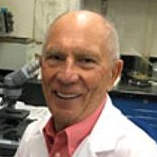Vitamin D and Its Analogues 2019: New Insights on Biological Effects and Therapeutic Uses
A special issue of International Journal of Molecular Sciences (ISSN 1422-0067). This special issue belongs to the section "Biochemistry".
Deadline for manuscript submissions: closed (31 August 2019) | Viewed by 33019
Special Issue Editors
Interests: vitamin D; vitamin D analogs; retinoids; semi-selective activities; cell differentiation; nuclear receptors
Special Issues, Collections and Topics in MDPI journals
Interests: acute myeloid leukemia; cell differentiation; vitamin D; vitamin D analogs; plant-derived bioactive compounds; redox signaling and regulation; calcium signaling; cell cycle regulation; apoptosis
Special Issues, Collections and Topics in MDPI journals
Interests: vitamin D; vitamin D analogs; retinoids; semi-selective activities; cell differentiation; nuclear receptors
Special Issues, Collections and Topics in MDPI journals
Special Issue Information
Dear Colleagues,
The proven importance of vitamin D for human health has stimulated extensive efforts, not only to understand the variety of its biological actions, but also attempts by organic chemists to modify the vitamin D structure to produce analogs that can be more potent in its effects on various body systems other than the skeletal system. The earliest modification occurred in nature. Animals, including humans, synthesize the secosteroid known as vitamin D3 (cholecalciferol), while plants synthesize vitamin D2 (ergocalciferol) with an unsaturated side-chain. Both have similar biological functions in humans, and both are used to treat rickets, osteoporosis, and osteomalacia. In order to be active as regulators of gene transcription, they need to be metabolically activated in the human body. Vitamin D2 and its derivatives were found to be somewhat less potent, but also less toxic, compared to vitamin D3 compounds. Numerous analogues have been synthesized with the primary goal of overcoming the hypercalcemic toxicity of active natural vitamin D derivatives, which limits their clinical use. Several such analogues have demonstrated reduced calcemic effects in model systems and human studies. Nevertheless, more work is necessary to develop clinically effective analogues. The ability of vitamin D compounds to cooperate with conventional drugs and with agents that sensitize abnormal cells to these compounds may offer a complementary approach towards an improved vitamin D-based therapy of human diseases.
This Special Issue will cover a selection of recent research topics and current review articles in the field of vitamin D and its analogues for biological actions and therapy of human diseases.
Prof. Dr. Ewa Marcinkowska
Prof. Dr. George P. Studzinski
Prof. Dr. Michael Danilenko
Guest Editors
Manuscript Submission Information
Manuscripts should be submitted online at www.mdpi.com by registering and logging in to this website. Once you are registered, click here to go to the submission form. Manuscripts can be submitted until the deadline. All submissions that pass pre-check are peer-reviewed. Accepted papers will be published continuously in the journal (as soon as accepted) and will be listed together on the special issue website. Research articles, review articles as well as short communications are invited. For planned papers, a title and short abstract (about 100 words) can be sent to the Editorial Office for announcement on this website.
Submitted manuscripts should not have been published previously, nor be under consideration for publication elsewhere (except conference proceedings papers). All manuscripts are thoroughly refereed through a single-blind peer-review process. A guide for authors and other relevant information for submission of manuscripts is available on the Instructions for Authors page. International Journal of Molecular Sciences is an international peer-reviewed open access semimonthly journal published by MDPI.
Please visit the Instructions for Authors page before submitting a manuscript. There is an Article Processing Charge (APC) for publication in this open access journal. For details about the APC please see here. Submitted papers should be well formatted and use good English. Authors may use MDPI's English editing service prior to publication or during author revisions.
Keywords
- vitamin D
- analogs of vitamin D
- vitamin D receptor
- vitamin D metabolism
- calcium-phosphate homeostasis
- differentiation
- apoptosis
- cell cycle
- intracellular signaling
- regulation of immune system








